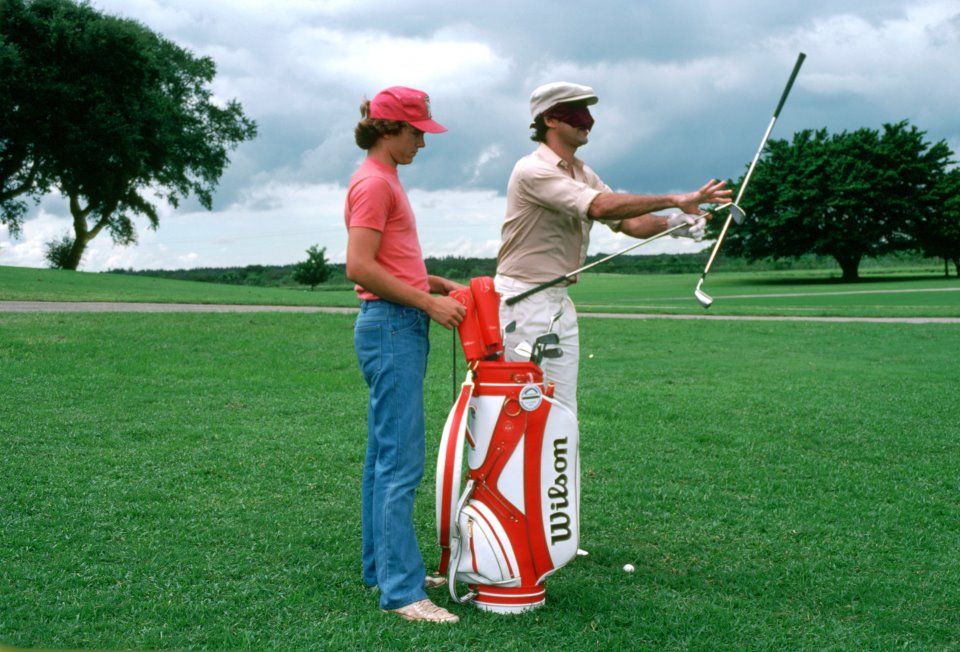What do Golf and investing have in common: 8 takeaway lessons from professional golf which can be useful when planning for retirement and managing finances.

Golf is quite popular with business professionals, in fact, according to a Forbes article, “A whopping 90% of Fortune 500 CEOs play golf, and 80% of executives say playing golf enables them to establish new business relationships.” And, just as popular as playing the sport amongst golf enthusiasts, is watching professional golf tournaments in person or on TV to pick up tips from pro golfers on how to improve their swing, lower their handicap, sharpen their short game, go the distance on the fairway, or handle a difficult putt. Recently the investment bank Morgan Stanley wrote an article titled “The surprising connection between golf and investing” that highlights some of the disciplines and lessons of golf’s top elite pro athletes which can be useful when thinking about investing for retirement and managing finances.
1. Many top-performing pro golfers have significant retirement savings
Most professional sports leagues have very generous retirement plans for athletes. According to an article published in MarketWatch in 2019, at that time, “over 600 pro golfers currently have more than $1 million in their retirement plans, and 114 have over $3 million.” Ron Price, the chief operating officer of the PGA Tour told MarketWatch that “because golfers on tour are considered independent contractors, the PGA Tour can’t just put money into a retirement account for them, and has to use deferred compensation plans.” Similar to how 401(k) plans often work, golfers can choose among 17 core mutual funds and 6 target-date funds. Price stated that Charles Schwab is the PGA Tour’s record-keeper, so the funds are primarily from companies on its platforms. The PGA Tour provides financial education to golfers by having both PGA Tour employees and people from Schwab at tournaments to assist players with retirement plan questions. Price also mentioned that a lot of players have their own financial advisers who help them invest their PGA Tour retirement money.
2. Defining a Goal

Now this may seem relatively straightforward or obvious. The goal in the game of golf is to hit the ball in the little hole hundreds of yards away with as few strokes as possible.
When developing a financial plan, defining your goal could be saving for retirement, paying for your child’s college, or buying a house. In any of these scenarios, one must define a goal to understand the rules of the game. How far away the goal is, aka an investor’s time horizon, determines if they are playing a par 3 or a par 5 hole as a comparison.
3. Follow a Routine

The Morgan Stanley article points out that if you have ever watched a golf tournament such as the AT&T Pebble Beach Pro-Am, you may have noticed that many of the PGA tour players go through a pre-shot routine before making a shot. Now, according to an article in Golf State of Mind, this is the first step in improving a player’s mental game of golf. Going through the steps of a good routine will have an enormous effect on their confidence and will (in addition to getting them well-prepared) distract them from negative thinking. This routine can be a crucial factor in sustained performance.
Investors can also create a routine that drives action. And that investing routine should also include certain steps, such as your overall financial investing strategy, measuring risk tolerance, knowing your time horizon, and aggressively saving. The Morgan Stanley article suggests that an investor should think about moves they can make on auto-pilot, such as regularly putting money into a 401(k).
4. Concentrate on the Fundamentals
Most professional golfers can summarize each shot they take down the fundamentals – posture, grip, alignment, and ball impact location. Now of course there is no one right way to grip a golf club or align your feet exactly. The combinations of golf swing tendencies are endless, and what works for your swing might not work for someone else’s. The Morgan Stanley article points out that “If shots are starting to go off-line, many times the problem can be attributed to one of those fundamentals being off—small issues such as a grip that’s too tight or knees that are too straight can be enough to throw off an entire swing.”
The same correlation can be made with investors when they find themselves veering off course with financial goals. The problem can arise when there is even a small change to their financial situation. This Forbes article documents some of Warren Buffet’s investing fundamentals. These changes could be that a person’s spending is increased to higher than they are saving each month. Does their portfolio asset allocation need to be adjusted so they can either take on more or less risk? Once the problem has been identified, then they can make the necessary adjustments to get back on course.
5. Be “in the zone”
According to a Huffington Post article being “in the zone” is a tunnel-vision phenomenon that is reported by athletes, creatives, and psychologists alike as a hyper-focused, sometimes spiritual, state of mind where anything is possible. It’s where someone becomes their most productive, creative, and powerful selves. The Morgan Stanley article suggests that an investor should learn to channel the focus of pro golfers when they’re playing well. Investors should learn to tune out the noise—which can include market swings, following financial news anxiously, and chasing stock tips. Stay in the zone by focusing on your financial strategy.
What are other ways to get in the zone? According to Psychologist Mihaly Csikszentmihalyi, the secret to getting “in the zone” is the Goldilocks principle: not too hot, not too cold. You want to feel inspired, but not overwhelmed. We can apply this to anything (everything!). Your squat weight, your career path, and your sex life: not so much challenge that you burn out, not so little that you get bored.
6. The Approach

In the famous end scene of the Golf comedy CaddyShack, Chevy Chase’s character Ty Webb provided the film’s most memorable advice—be the ball. “There’s a force in the universe that makes things happen,” he quipped. “And all you have to do is get in touch with it, stop thinking, let things happen, and be the ball.”
Having confidence matters, this is what separates the pros from the amateurs. If you can just chip this bad boy within a couple of feet from the hole, then you’re just a putt away from hearing the sweet sound the ball makes when it drops in the hole.
Now when it comes to financial planning, an investor should be making sure that all of their ducks are in a row so to speak. One can start by asking questions such as:
- How much income can your savings support?
- Do you have any pension income to account for?
- What does social security look like?
- What bills can you pay off while you’re still working?
By figuring out the answer to some of these questions, an investor can get themselves set on the right track for building savings and wealth for retirement.
7 They Seek Good Advice
The best athletes are always continuing to work on their skills. The Morgan Stanley article points out, the best PGA tour golfers “will work regularly with a swing coach and adhere to their guidance.”
In a similar vein, even successful investors who might think they are “on top of their game” will also seek advice from respected financial advisors who can help them get an unbiased perspective on strategies, assess their strengths and weaknesses, help to better clarify long term goals and design a retirement plan that helps them achieve their financial retirement goals.
8 They Understand That Bad Shots Do Happen

Even the best golfers know that not every shot they take is going to perform in a way that they wanted. One reason, of course, is that a lot can go wrong in the golf swing; another, more likely reason is that your mind often impedes. Whether you think too much (about swing technique or a water hazard) or don’t picture the shot at hand or fail to build a repeatable routine, simple course management and mental game techniques can help you not only play smarter but also swing better.
But according to Morgan Stanley’s article, many top golfers say the goal shouldn’t be to avoid making any bad shots but to develop and maintain the emotional equilibrium to focus on the next shot, and the one after that so that you ultimately stay on track.
What also is true, is that when an investor is working toward reaching a financial goal, they could not expect the stock market to always go up. There is plenty of risk and market volatility and down cycles. When market volatility hits, it’s important to not panic and make rash decisions that could upend all of your progress.
Conclusion
The goal in golf is to make it onto the putting green in the lowest amount of strokes, but you must also keep in mind that the game doesn’t start 18 inches from the hole. The decisions you made as soon as you teed up your ball set you on a course for success or failure. Where golf and financial planning differ is that once you hit your last stroke on a hole, you pick up and move on, but your financial plan continues to change and adapt. Ongoing review of your financial plan is crucial to increasing the odds that you don’t outlive your money, and hiring a qualified financial planner helps make it so you can spend more time on the links and less time worrying about your money.










